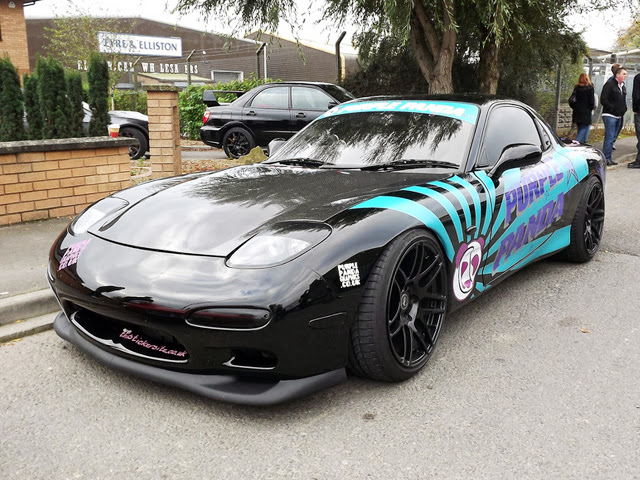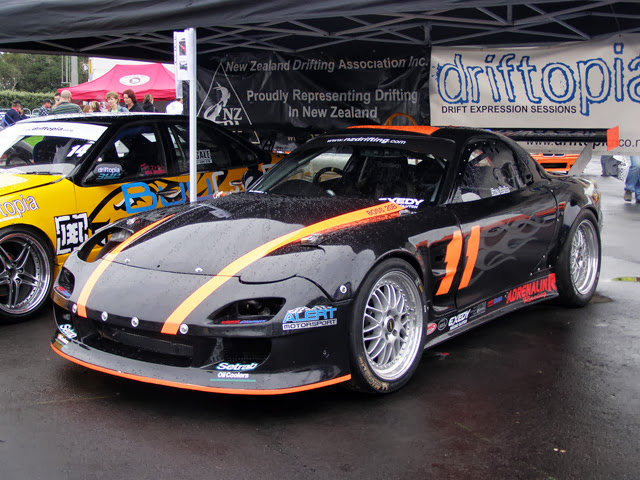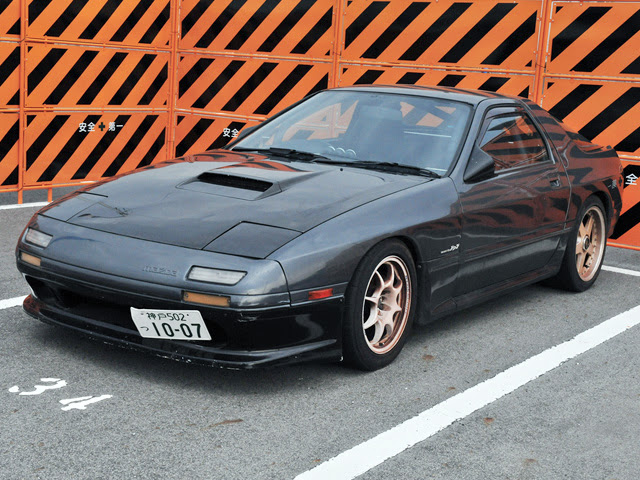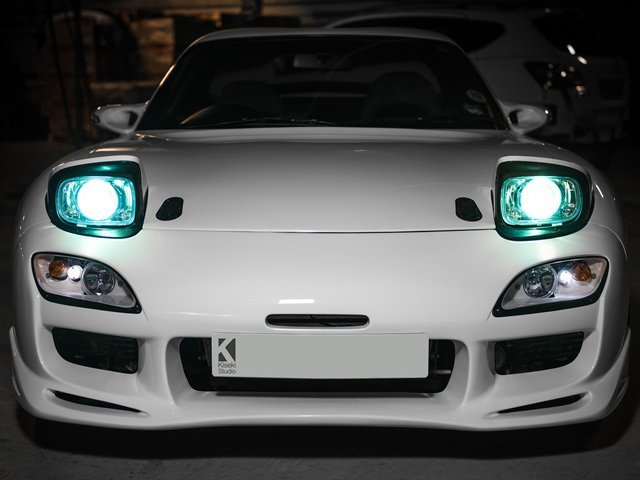Only Mazda felt confident enough to utilize the Wankel rotary in their acclaimed sports cars.
Mazda's insistence on using rotary engines over the years has seemed a bit odd at times. But when an era came about when lightweight cars were in demand for tuning, the RX-7 was waiting to become an icon. The RX-7 replaced the RX-3, a rotary-powered coupe which, though sporty, could never have become much of an icon. Mazda sold the RX-7 in huge numbers, ironically, sales began to slow only after it had become popular with tuners. The first generation of the RX-7 was built in 1978.

It wasn't especially powerful, producing 135 horsepower in its most powerful form, but the very low weight of 2,500lbs made it fast enough to be a stand-out in performance within its price range. It was a massive success, selling in large numbers particularly in the US. It featured an 1146cc twin-rotor Wankel engine, and this displacement would only grow up to 1.3-liters by the end of the RX-7's lifetime. For all their drawbacks, rotary engines have unparalleled volumetric efficiency. It was in 1986, with the introduction of the second generation of the RX-7, that Mazda would begin to really explore the potential of the car.
The new enlarged engine had lighter rotors and an increased compression ratio. It produced 146 horsepower, but a turbocharged model was now offered as well, and this produced 185 horsepower. Best of all, this increase in power wasn't accompanied by any significant gain in weight. Suspension and brakes were greatly improved over the previous generation as well, and it was as big a hit with the automotive press as it was with buyers. Of course, some of this sales success could be attributed to the new body, which was not too subtly designed to resemble the Porsche 944.



But with its lower price the RX-7 was the better deal anyway, although the second generation RX-7 still wouldn't be as popular with tuners as the generation to come after it. Despite being the least popular with buyers, the third generation was the fastest by far, as well as the most popular with tuners. A more sophisticated sequential turbo system replaced the on/off system of the second gen car, and power climbed to 250 horsepower. This is noticeably less than competitors, like the Toyota Supra, but the RX-7 also weighed around 500lbs less than the Supra, and that's something you'll also notice when you drive it.
An even 50-50 weight distribution made for more competent handling than most other cars in the segment as well. This is aided by the fact that the engine is so small that Mazda was able to mount it in the front of the car but behind the front axle. A slightly higher-performance version of the RX-7 was even homologated to race in an endurance series in Australia, it beat a number of Porsche 911s, the reigning king of GT racing. Although a rotary engine has no connecting rods to snap, this doesn't mean that tuning one is as simple as cranking up the boost all the way.


Rotors and seals are still subject to damage, and a really serious tuning of a Wankel engine includes replacing these components. Although this is probably a good idea no matter what, since the third generation RX-7 was also infamous for engines that would sometimes explode after about 50,000 miles or so. This meant that used examples of the car, particularly turbocharged models, came to be viewed as time bombs. But this was good news for anyone who was planning an engine rebuild anyway, since it kept prices down.
Rotary engines also love to rev, since their internals aren't subject to the same sorts of stresses as a reciprocating engine, but this constant high revving had a tendency to cause problems with transmission mounts, and this is another issue which needed to be addressed. The RX-7 was killed off in 2002. It was replaced by the RX-8, and the unfortunate truth is that this car just never lived up to the legacy of its predecessor. Besides never having offered a turbocharged model, the body of the RX-8 is decidedly un-sexy when compared to the RX-7, and it's hardly surprising that it was never as successful as the previous model.


Few even noticed when Mazda decided to stop building it recently. The proof of the RX-7 iconic status is simply that when you hear the words "tuned RX-7" you're picturing one in red and white with a Veilside body kit, whether you want to or not. The RX-7 turned no small number of people into devotees of the rotary engine, although the timing of this is perhaps a bit unfortunate. One thing which rotary engines are not famous for is fuel efficiency, and that's the name of the game these days. But Mazda has announced that they intend to apply their SKYACTIV engine technology to the Wankel, and make a fuel efficient rotary sometime in the next few years.























